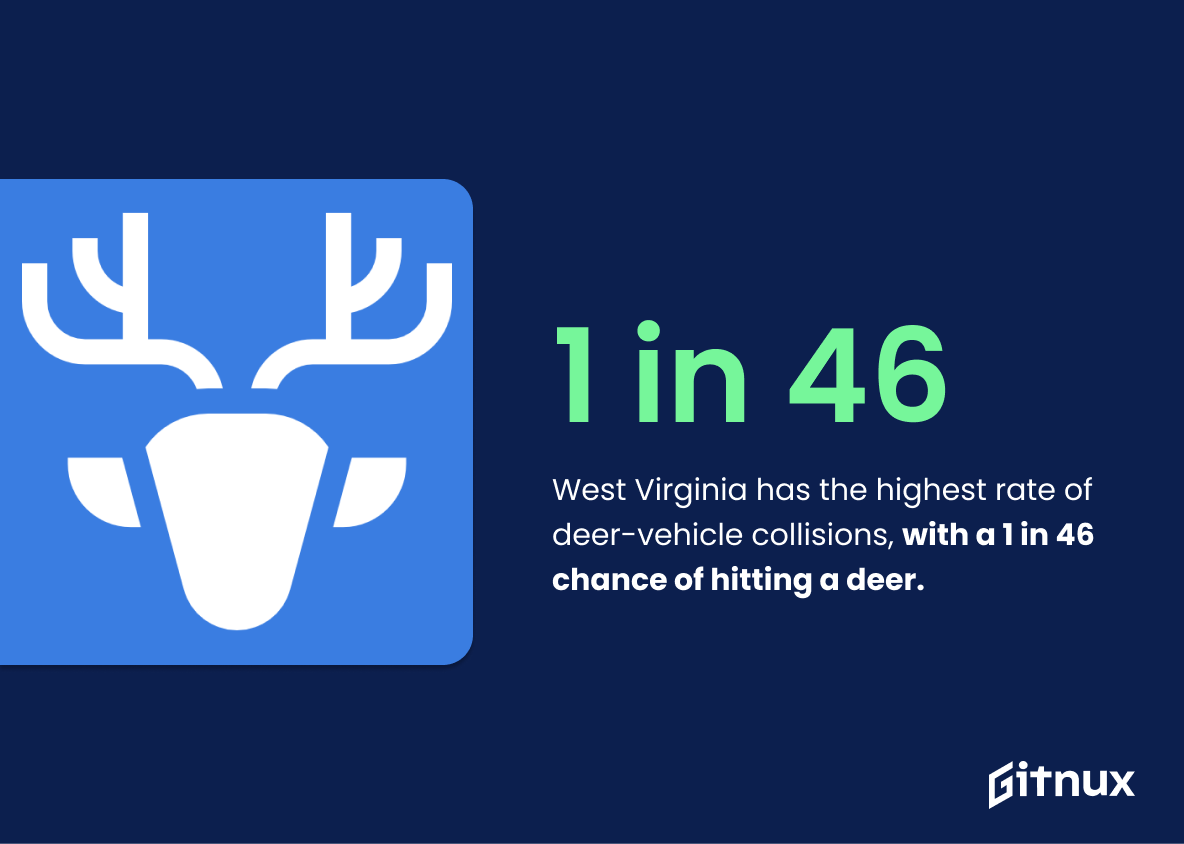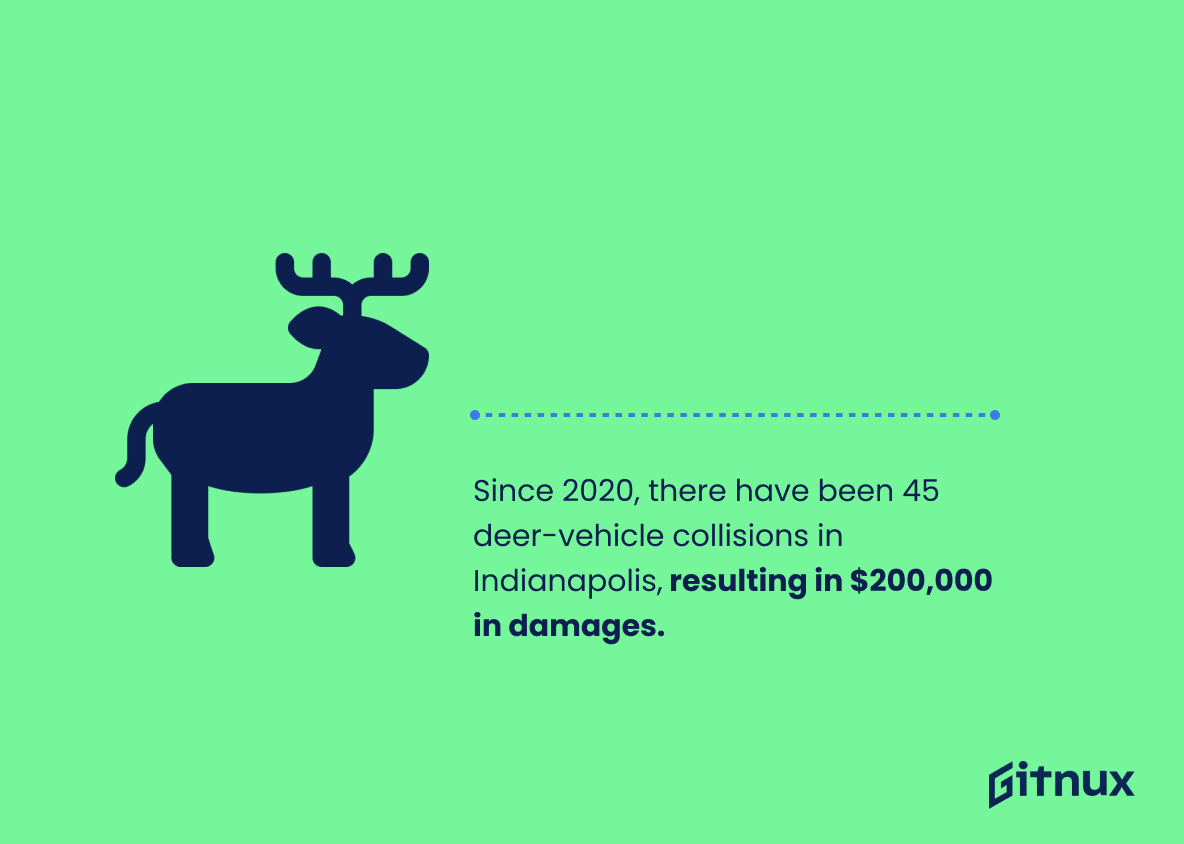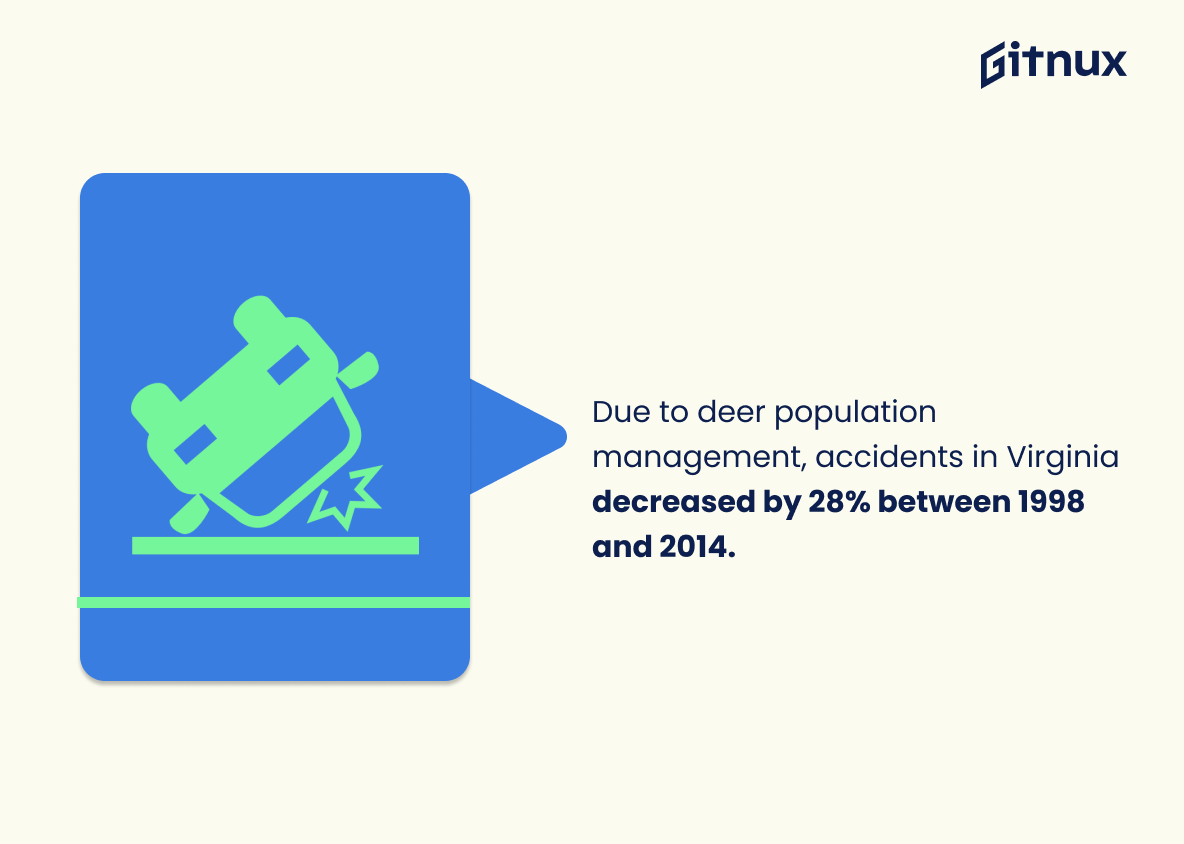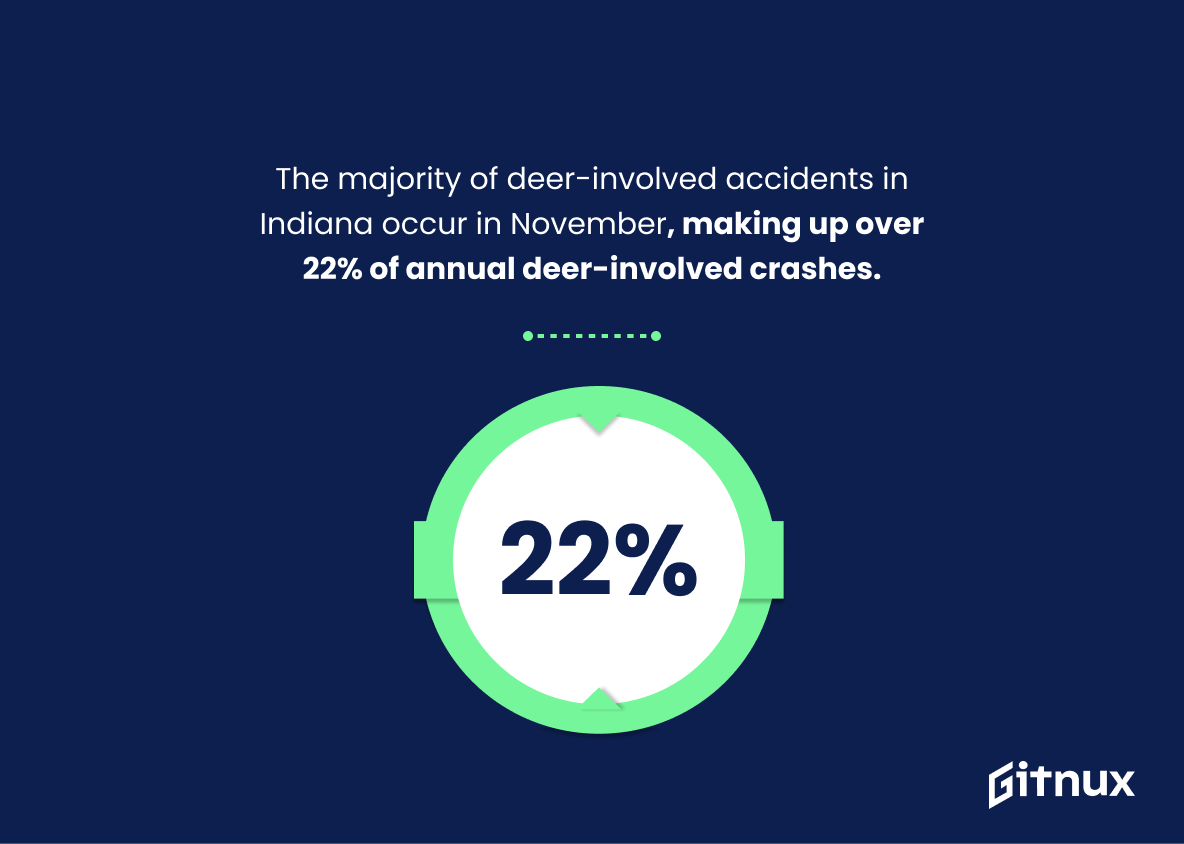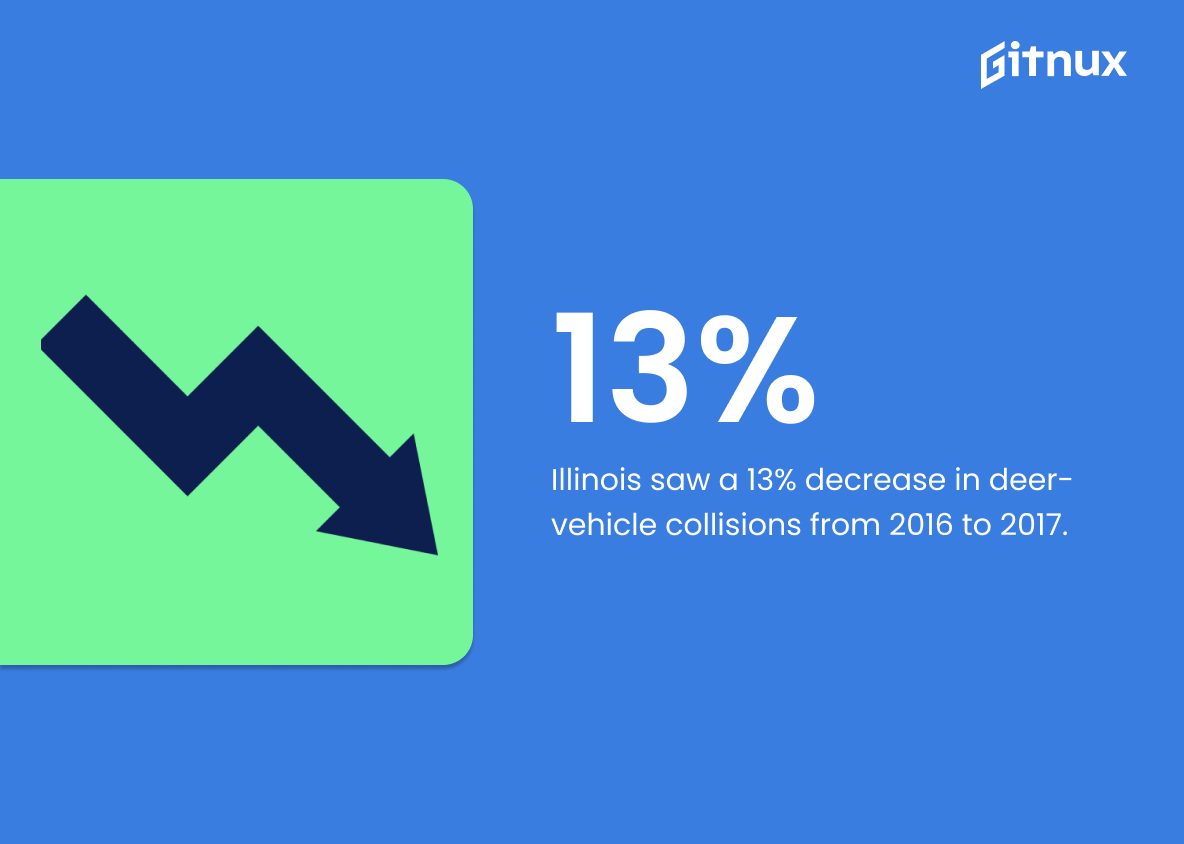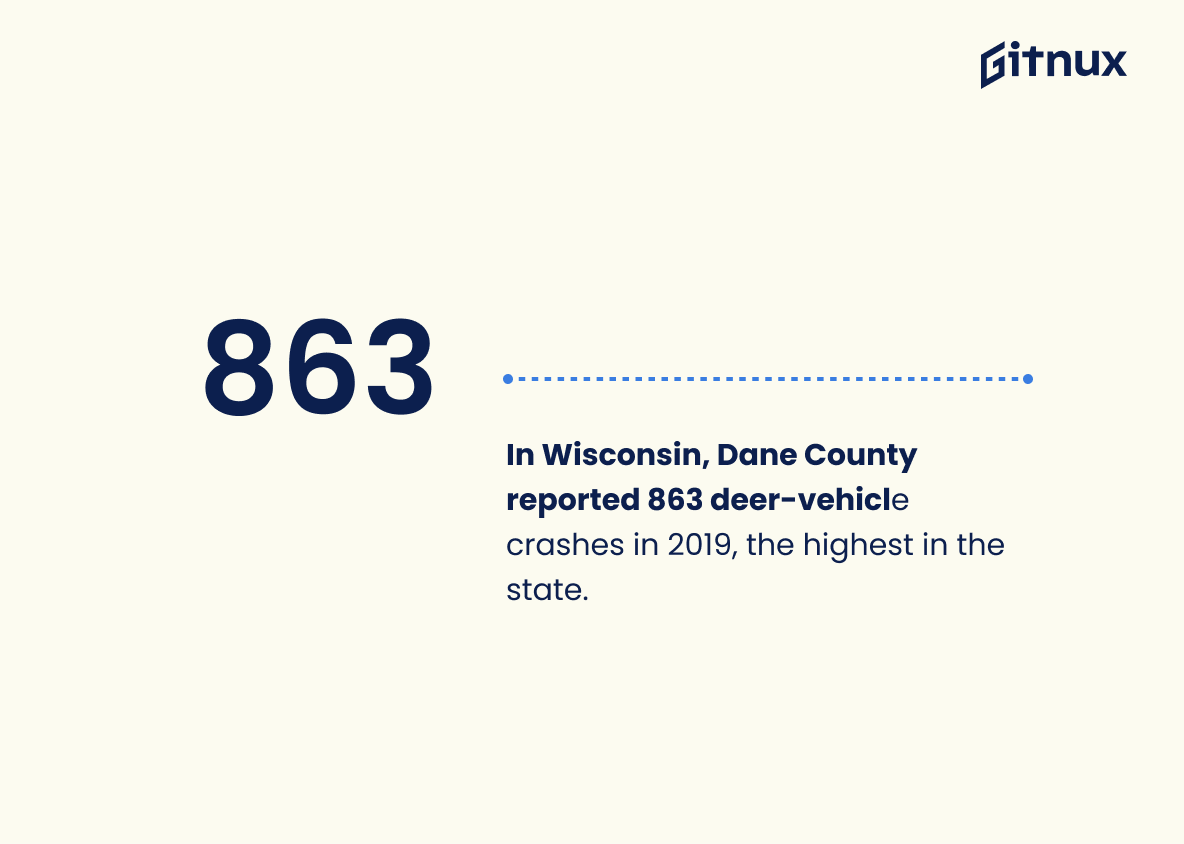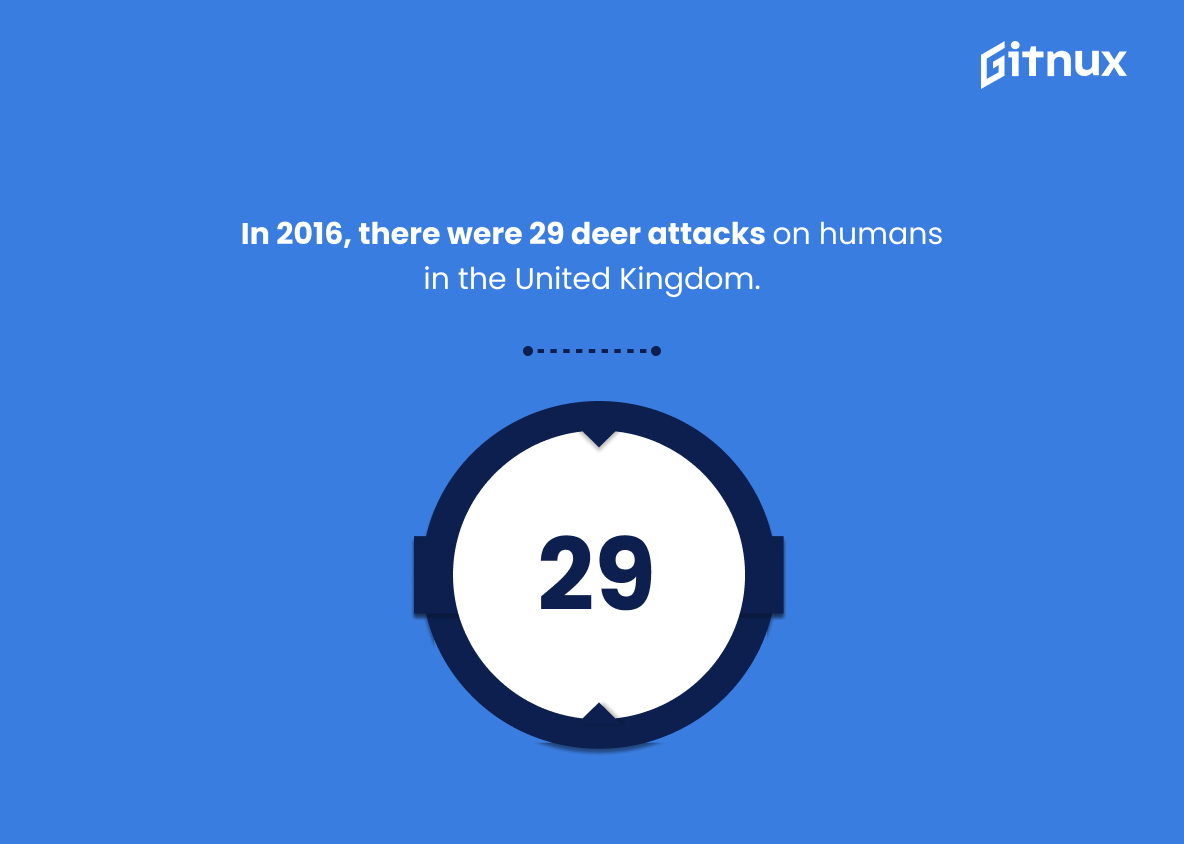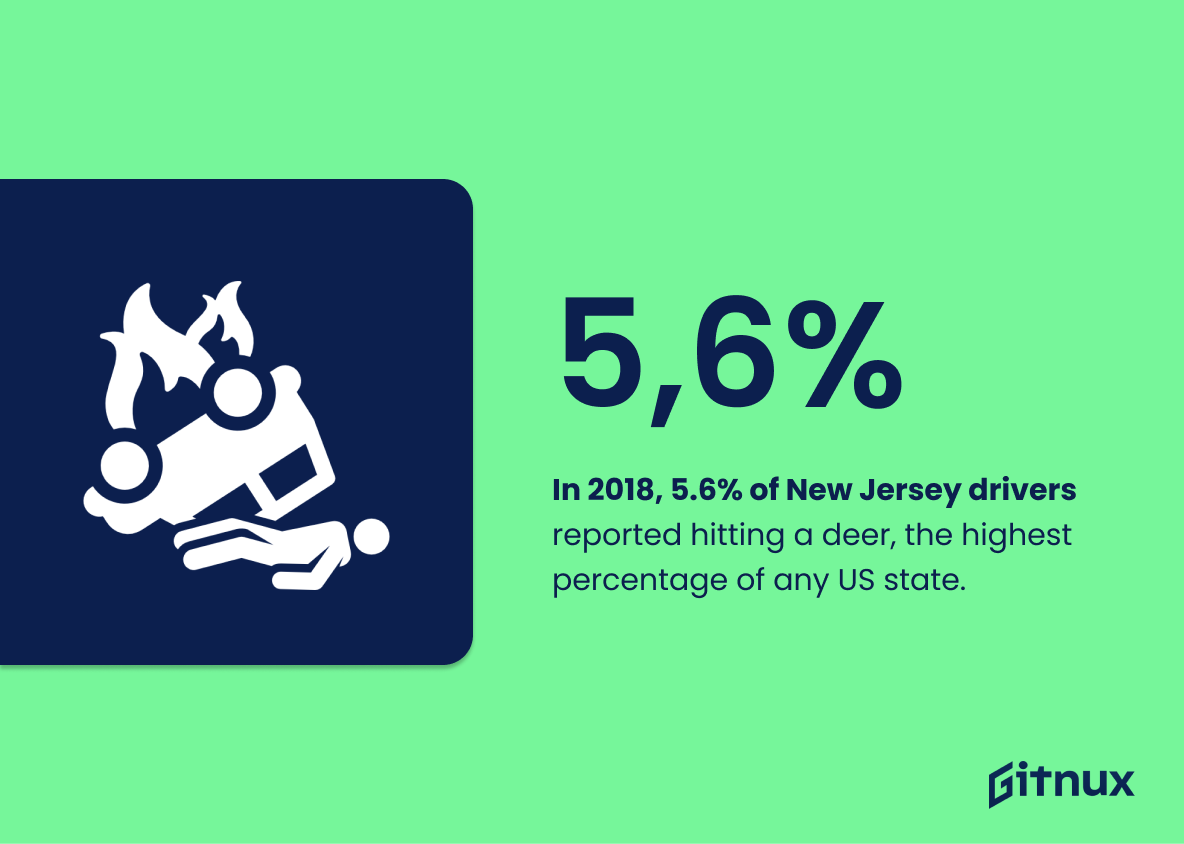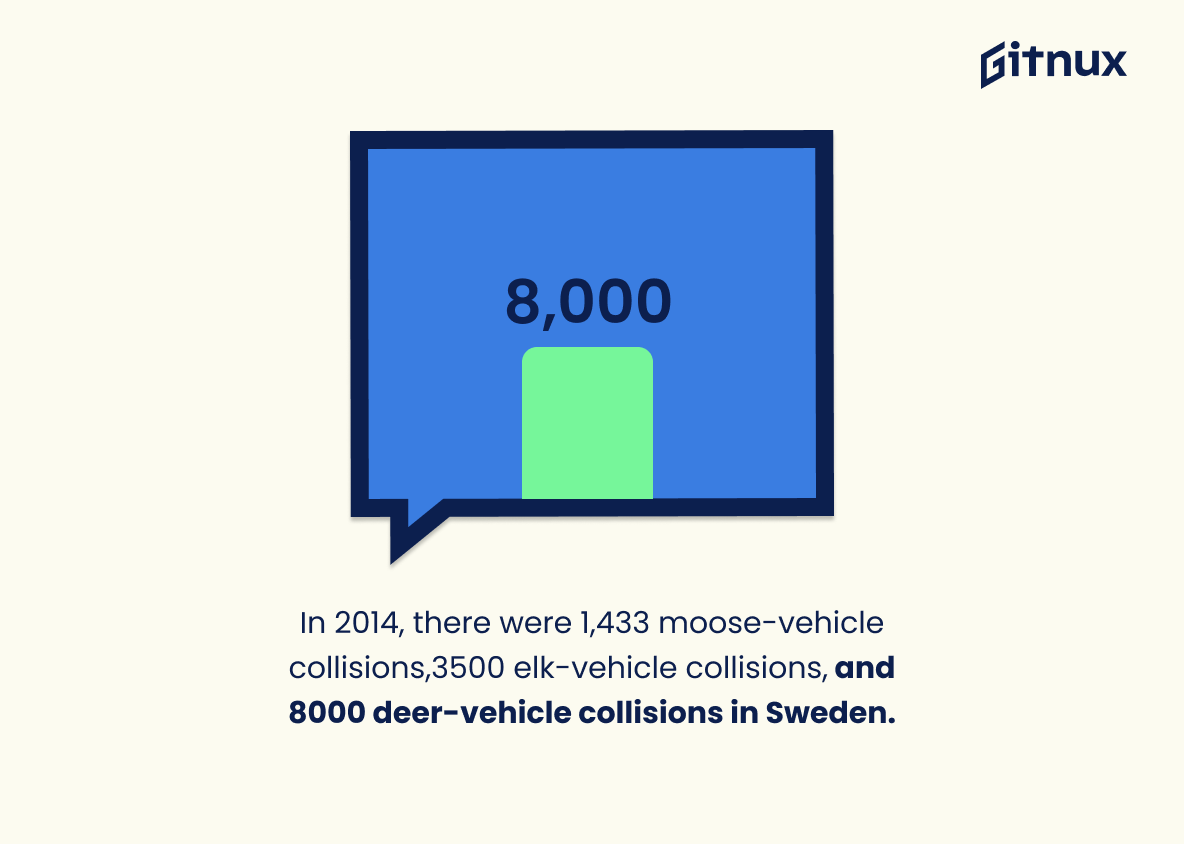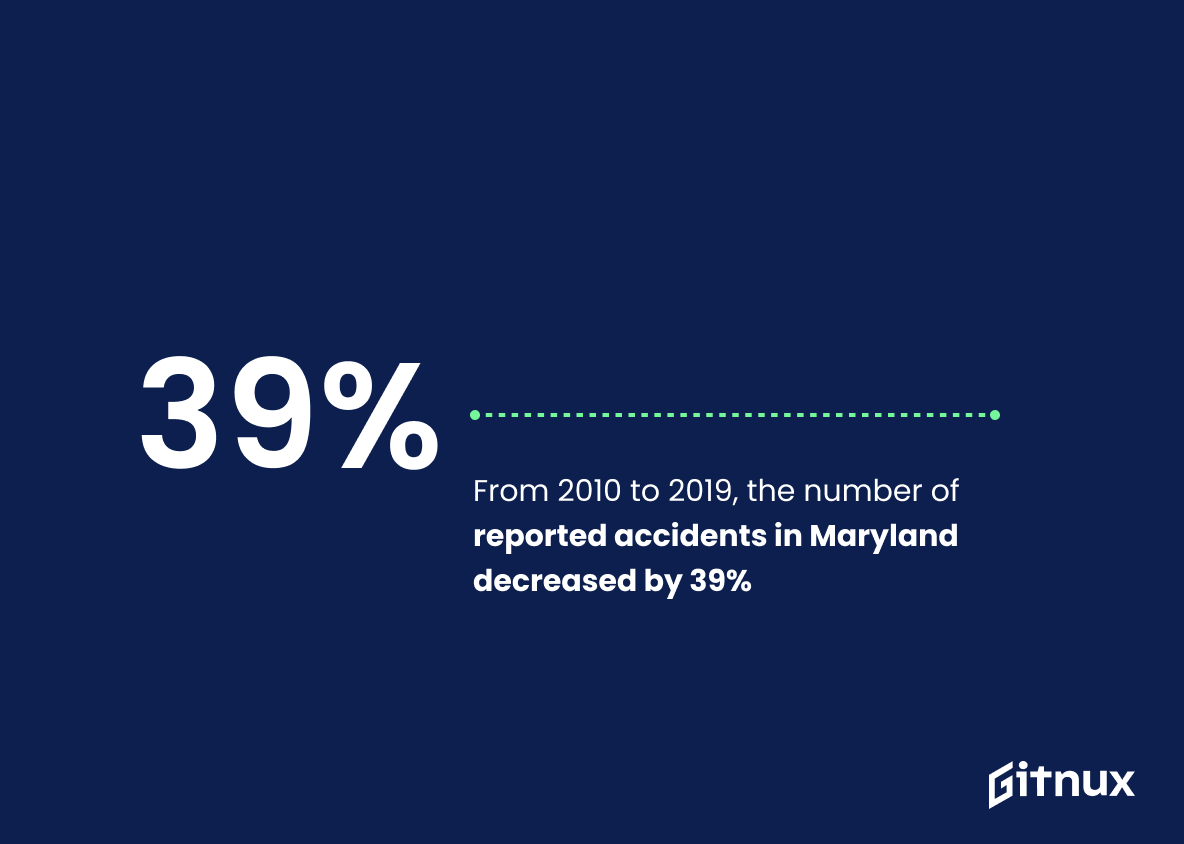Deer-vehicle collisions are a serious problem in many parts of the world. In the United States alone, there are an estimated 1.5 million deer-vehicle collisions each year, resulting in over $1 billion in property damage and 200 deaths annually. The majority of these accidents occur between October and December when deer populations peak due to mating season. West Virginia has the highest rate of such incidents with a 1 in 46 chance of hitting a deer while driving on its roads.
In 2021, Japan’s Nara Park saw 12 injuries from deer attacks within one week alone. Even airports aren’t safe – Indianapolis International Airport reported 45 crashes since 2020 causing around $200,000 worth of damage so far this year.
Fortunately, some areas have seen success through population management efforts; Fairfax County Virginia experienced 28% fewer accidents between 1998 and 2014 as well as Austin Texas seeing 25% reduction from 2004 to 2020 due to similar initiatives taken by local authorities . New York State also saw 3500 elk-vehicle collisions decrease from 2016’s peak at 35000 down to 31000 by 2019 while Maryland had 39% drop off during 2010–2019 period (from nearly 4000 down to 2500). Sweden too recorded 8000 Deer related vehicle collision along with 1433 Moose & Elk related ones back in 2014 according their research study conducted that same year..
Overall it is clear that although still prevalent across much US states & other countries alike , steps can be taken towards reducing number or severity associated with such unfortunate events if proper measures are implemented accordingly
Deer Attacks Statistics Overview
Most deer-vehicle collisions occur between October and December.
This statistic is a crucial piece of information when it comes to deer attacks statistics, as it provides insight into when drivers should be most vigilant. Knowing that most deer-vehicle collisions occur between October and December can help drivers be more aware of their surroundings and take extra precautions when driving during this time of year.
West Virginia has the highest rate of deer-vehicle collisions, with a 1 in 46 chance of hitting a deer.
The statistic that West Virginia has the highest rate of deer-vehicle collisions is a stark reminder of the dangers of deer-related accidents. With a 1 in 46 chance of hitting a deer, it is clear that drivers in West Virginia must be extra vigilant when on the roads. This statistic serves as a warning to all drivers to be aware of their surroundings and to take extra precautions when driving in areas with a high deer population.
In 2021, deer attacks in Japan’s Nara Park caused 12 injuries in one week.
This statistic is a stark reminder of the dangers posed by deer attacks in Japan’s Nara Park. It highlights the need for increased awareness and safety measures to protect visitors from potential harm. The fact that 12 people were injured in a single week is a cause for concern and should not be taken lightly.
There have been 45 deer-vehicle collisions on Indianapolis International Airport’s property since 2020, causing $200,000 in damage.
This statistic serves as a stark reminder of the potential danger posed by deer-vehicle collisions on Indianapolis International Airport’s property. With 45 collisions since 2020, and a total of $200,000 in damage, it is clear that these incidents are not only costly, but also potentially life-threatening. This data highlights the importance of taking necessary precautions to protect both drivers and wildlife from the risks of deer-vehicle collisions.
Due to deer population management, deer-related accidents in Fairfax County, Virginia, decreased by 28% between 1998 and 2014.
This statistic is a testament to the effectiveness of deer population management in Fairfax County, Virginia. It shows that by taking proactive steps to manage the deer population, the county was able to reduce the number of deer-related accidents by a significant amount. This is an important point to make in a blog post about deer attacks statistics, as it demonstrates that proactive management of deer populations can have a positive impact on public safety.
The majority of deer-involved accidents in Indiana occur in November, making up over 22% of annual deer-involved crashes.
This statistic is a crucial piece of information when it comes to understanding the prevalence of deer-involved accidents in Indiana. It highlights the fact that November is a particularly dangerous month for drivers, with over 22% of annual deer-involved crashes occurring during this time. This information is essential for drivers to be aware of, as it can help them to take extra precautions when driving during this month.
Illinois saw a 13% decrease in deer-vehicle collisions from 2016 to 2017.
This statistic is a testament to the effectiveness of the measures taken to reduce deer-vehicle collisions in Illinois from 2016 to 2017. It shows that the efforts to reduce the number of deer-vehicle collisions have been successful, and that the state is making progress in reducing the number of deer-related accidents. This is an important statistic to consider when discussing deer attack statistics, as it demonstrates that the state is taking steps to reduce the risk of deer-related accidents.
In Michigan, Oakland County had the highest number of deer-related crashes at 1,847 in 2020.
The fact that Oakland County had the highest number of deer-related crashes in Michigan in 2020 is a stark reminder of the dangers posed by deer. It serves as a warning to drivers to be extra vigilant when driving in areas where deer are known to be present. It also highlights the need for increased awareness and education about the risks of deer-related crashes.
In Wisconsin, Dane County reported 863 deer-vehicle crashes in 2019, the highest in the state.
The fact that Dane County reported 863 deer-vehicle crashes in 2019 is a stark reminder of the dangers posed by deer attacks. It serves as a warning to drivers in Wisconsin to be extra vigilant when driving, especially in Dane County, as the risk of a deer-vehicle collision is particularly high.
Deer-related accidents in New York State peaked at 35,000 in 2016 but decreased to 31,000 by 2019.
The fact that deer-related accidents in New York State have decreased from 35,000 in 2016 to 31,000 in 2019 is a testament to the effectiveness of the measures taken to reduce the risk of deer-related accidents. This is an encouraging sign that the efforts to reduce the number of deer-related accidents are paying off, and it is a reminder that continued vigilance is necessary to keep the number of deer-related accidents low.
In 2016, there were 29 deer attacks on humans in the United Kingdom.
This statistic is a stark reminder of the potential danger posed by deer attacks in the United Kingdom. It serves as a warning to those who may be unaware of the risks associated with deer, and highlights the need for caution when encountering them. It also provides a valuable insight into the prevalence of deer attacks in the UK, and can be used to inform policy decisions and public safety initiatives.
In 2018, 5.6% of New Jersey drivers reported hitting a deer, the highest percentage of any US state.
This statistic is a stark reminder of the dangers of deer attacks in New Jersey, with the highest percentage of drivers reporting hitting a deer of any US state. It serves as a warning to drivers to be extra vigilant when driving in New Jersey, as the risk of a deer attack is significantly higher than in other states.
In 2014, there were 1,433 moose-vehicle collisions,3500 elk-vehicle collisions, and 8000 deer-vehicle collisions in Sweden.
This statistic paints a vivid picture of the dangers of deer-vehicle collisions in Sweden. It shows that deer-vehicle collisions are far more common than moose-vehicle and elk-vehicle collisions, making them a major hazard on the roads. This data serves as a stark reminder of the importance of being aware of deer on the roads and taking the necessary precautions to avoid collisions.
From 2010 to 2019, the number of reported deer-related accidents in Maryland dropped by 39%, from nearly 4,000 to around 2,500.
This statistic is a testament to the effectiveness of the measures taken to reduce deer-related accidents in Maryland. It shows that the efforts to reduce the number of accidents have been successful, and that the state is on the right track in terms of reducing the number of deer-related accidents. This is an important piece of information for readers of the blog post, as it provides evidence that the state is taking the issue of deer-related accidents seriously and is making progress in reducing the number of accidents.
Conclusion
The statistics presented in this blog post demonstrate the prevalence of deer-related accidents and collisions across the United States, as well as other countries such as Sweden and Japan. The data also shows that most incidents occur between October and December, with West Virginia having the highest rate of deer-vehicle collisions. Additionally, it is evident that certain areas have implemented successful management strategies to reduce their number of reported crashes over time. It is important for drivers to be aware of these risks when driving during peak season or in high risk areas so they can take necessary precautions to avoid a collision with a deer.
References
0. – https://www.www.insurancejournal.com
1. – https://www.www.iii.org
2. – https://www.news.maryland.gov
3. – https://www.www.automotivedefense.com
4. – https://www.www.japantimes.co.jp
5. – https://www.www.indystar.com
6. – https://www.www.tmj4.com
7. – https://www.www.carinsurance.com
8. – https://www.www.chicagotribune.com
9. – https://www.patch.com
10. – https://www.www.fairfaxcounty.gov
11. – https://www.www.addl.purdue.edu
12. – https://www.www.monroecopost.com
13. – https://www.www.telegraph.co.uk
14. – https://www.www.worldwildlife.org
15. – https://www.www.nbcnews.com
